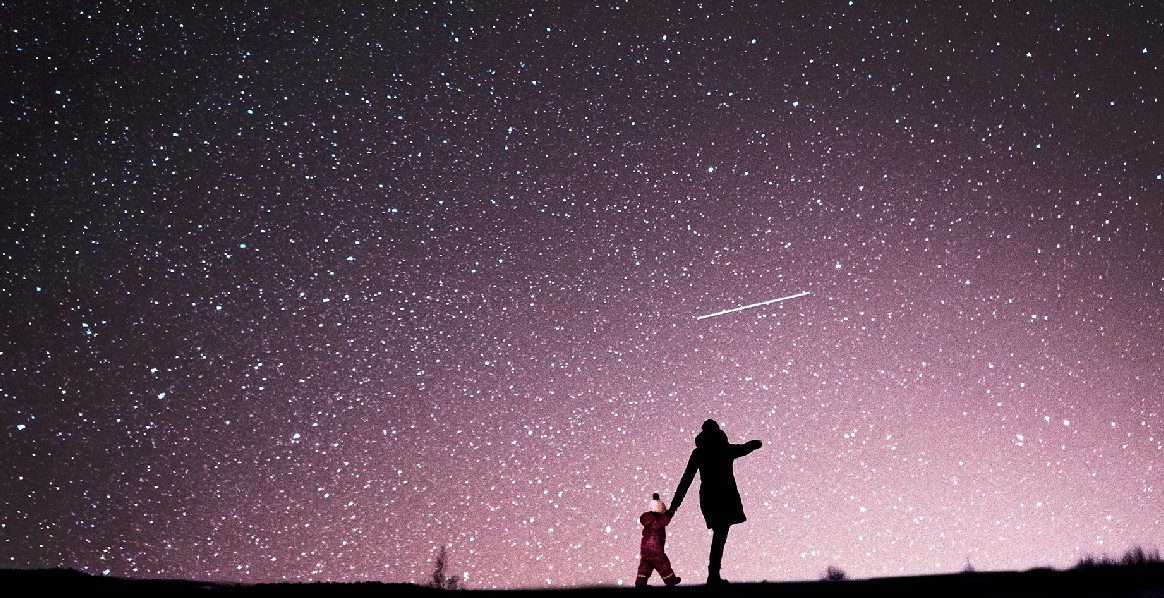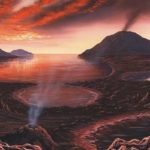| Ever wondered where stars are made? Well, now you are about to find out! Just where these hot balls of gas start their lives begins in what astronomers call a nebula (plural: nebulae) and they are basically the nurseries of the Universe. Do you remember when your parents first took you to nursery? Do you remember what it was like? |
|
Well, whatever you remember from the nursery that you went to, stellar nurseries are quite different! For one, a nebula is a gigantic cloud of dust and gas; mainly of hydrogen and helium gases, and they can be light years across – that’s trillions of miles – imagine how many nurseries you can fit into one of these ginormous star factories! Secondly, they look quite fuzzy in appearance – pretty much like fluffy clouds or cotton wool in the sky. Imagine having to go nursery in a massive splattering of cotton wool? Nebulae come in not just a variety of sizes, they also come in a range of shapes with some of them looking very much like anything from horses (the Horsehead Nebula) to crabs (the Crab Nebula). The massive question is though, how do they form or have they always been there? What do you think? |


When it comes to making stars, astronomers believe that nebulae are made from the huge collapse of gas in what they refer to as the Interstellar Medium (the gas, dust and cosmic rays that can be found between planets and stars in galaxies). As the material falls in on itself under its own weight, large stars are made in the centre. When this happens, ultraviolet radiation shoots out like a laser beam and the nebula is lit up – just like a Christmas tree! Astronomers have a name for these types of nebulae – can you guess what that is? Here’s a clue – it’s a word for “throwing out light.” If you are not too sure, then have a peek, but if you think you can have a guess, then write down your answer – remember, you can have as many goes as you like!
Emission Nebulae



Sometimes, stars do not have enough pent-up energy to zap their surroundings with high energy particles. So they happily sit in clouds of dust and these clouds reflect their light. You might be able to see little pieces of dust floating around in the air right now. Do you know why you can see them? That’s right! Because there’s light (either from a lamp or the Sun) illuminating them. This light is reflected and that’s pretty much what happens in a reflection nebula. If you asked an astronomer to give you an example of one of these nebulae, then they are more than likely going to answer with the Witch Head reflection nebula which is also found in the constellation of Orion. They appear blue in color due to what is known as scattering. You can learn more about scattering in the “Did You Know” box below. Where there’s a reflection nebula, you can usually guarantee that an emission nebula is not too far away. Astronomers call them diffuse nebulae when they are found together.

Does it look like the side view of a witch’s head to you?
Planetary Nebulae

That’s not the end of our tour of nebulae – there’s more! Last but not least there’s planetary nebulae – but do not be fooled – these shells of gas have absolutely nothing to do with planets! This type of nebula earns its name because some astronomers of the 18th Century believed that they looked like giant worlds through the eyepiece of small telescopes. Here’s a tricky question; how do you think that these nebulae are made? Here’s a clue – it’s not through the collapse of the Interstellar Medium and it’s something to do with the fuel of a star. Have you had a guess? Read on to see if you’re right!
Planetary nebulae are made when a star runs out of fuel to burn. What happens next is amazing. What do you expect to happen when a star runs out of fuel? Have a quick think and write down some answers. It’s not quite the same as when your car runs out of gas, where it stops moving – what happens to a star is quite a bit different; it blows off its outer layers of gas in the shape of a ring or bubble. When stars do this, astronomers say that a star is dying. But it’s not a sad ending for the star, it’s a beautiful colorful one!
What we mean in terms of a dying star, at least when it comes to stars just like our Sun (called Sun-like stars), is that it’s changing into a red giant star. A red giant is a huge star that can swell to a size that swallows up everything in its path. After spending millions of years as a heavy weight giant, it shrinks again, pushing off the outer layers that we mentioned earlier. Planetary nebula are usually visible for around 50,000 years before starting to mix with the space that surrounds it – so there’s plenty of time to get out your telescope to have a look. Maybe you can decide for yourself if it looks like a planet!

Bok Globule |
|
|
The nebulae that we have been learning about are not the only places where star birth can be found – there’s the Bok globules which are really thick dark clouds of cosmic dust and gas. Because they are so dense, they block out light behind them, so astronomers can find them quite easily! |
|
|
Reflection nebulae appear blue pretty much due to the same reason why the sky is blue and this is due to scattering. But how does scattering work? The simple answer is that the light that is thrown out from a star, or our Sun, is reflected. Light that comes from the Sun and most newborn stars is called white light and it is made of many different colors – very similar to a rainbow. When this light travels passed particles of dust, the blue light (or if you want to be scientific; wavelength) is scattered; bouncing off every dust particle that it encounters before reaching our eyes – very much like how balls on a pool table are thrown in all directions as the white ball hits them and they start to bounce off of each other if they come into contact. The remaining light gets to travel through without being touched and that’s why we don’t really get to see other colors in the sky above us or in reflection nebulae. |








